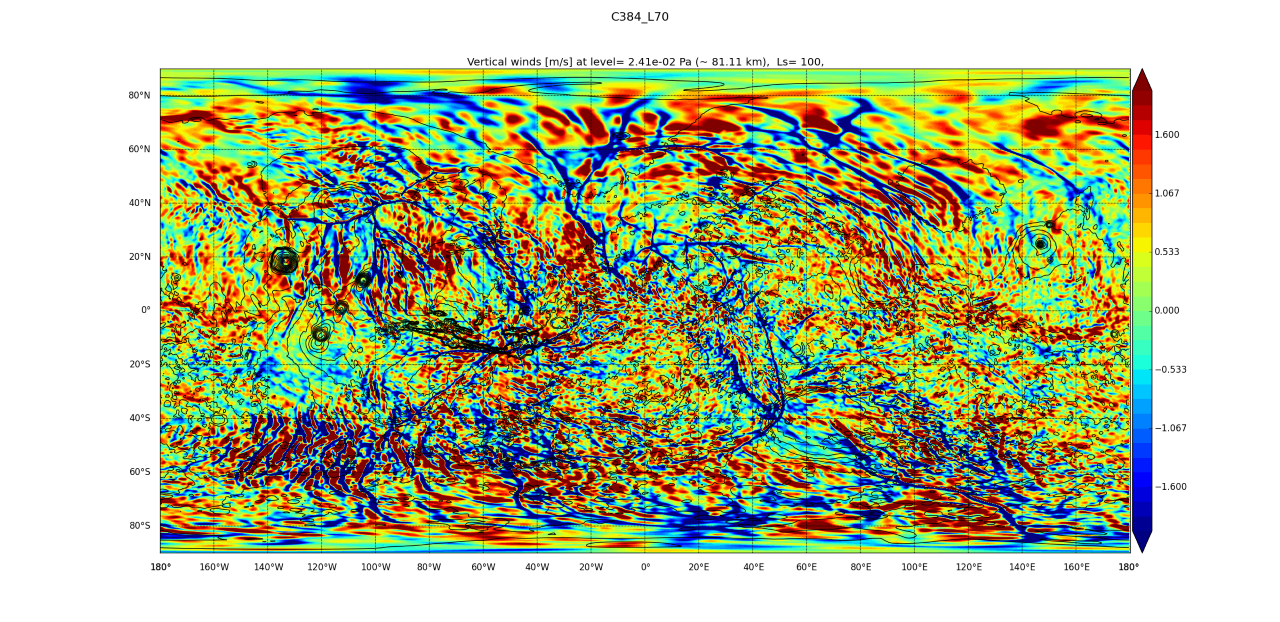Gravity Wave Drag
Gravity waves are small-scale perturbations excited by topography or convection (e.g. wind shear, frontal systems; Figure 1). When the atmosphere is stable enough these waves can grow in amplitude and propagate upward over tens of kilometers, until they break (i.e. the wave becomes unstable) and alter the atmospheric flow by depositing stored momentum and energy which leads to turbulent mixing.
One challenge associated with modeling gravity waves with Global Climate Models GCMs is that the horizontal scale for the sources of the gravity waves (e.g. the topography when the waves are orographic) is typically much smaller than the grid spacing of the model. Therefore, these waves cannot be adequately resolved within numerical simulations and must be parameterized as a sub-grid scale process. We ported the implementation of the Palmer et al. (1986) orographic gravity wave scheme into NASA Ames Mars Global Climate Model (MGCM). The implementation included wavelength-dependent thermal damping rates from Eckermann et al. (2011) which allows us to alleviate some (but not all) of the systemic bias in polar temperature when comparing the MGCM predictions to spacecraft observations.
A second category of gravity waves, designated as “non-orographic” occurs when the source of the perturbation is dynamic, (e.g. convection, front systems) With the GFDL’s FV3 dynamical core capability, the Ames GCM now reaches a resolution where both of the topography features and dynamics that are exciting the gravity waves start to be resolved explicitly. Simulations were run at different horizontal and vertical resolutions to investigate the impact on the waves’ propagation and breaking.



























